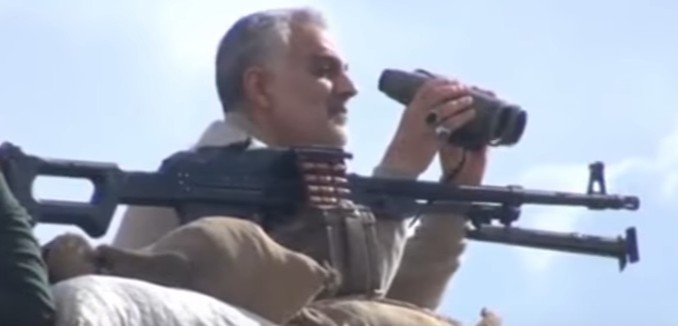The recent infiltration of Israeli airspace by an Iranian drone and the subsequent Israeli counter-strikes draw attention to “to how deeply Iran has embedded itself in Syria” and “redrawing the strategic map of the region,” The New York Times reported Monday.
This means that in a direct confrontation between Israel and Iran, Iran could call upon its “axis of resistance,” as it refers to its “expanding network of militant proxies in multiple countries.”
Iran’s goal in establishing itself in Syria is “to make Syria a new front between Israel, Hezbollah and Iran,” in case of a new war, according to Amir Toumaj, a researcher at the Foundation for Defense of Democracies who studies Iran. “They are making that not just a goal, but a reality.”
Analysts cited by the Times said that Iran’s strategy emphasized the building of alliances with local forces that could benefit from its training and financing, instead of just controlling territory. This approach has allowed Iran to “amplify” its power across the Middle East, threatening Israel, Saudi Arabia and American interests.
The emerging threat, according to the Times, is prompting Israelis to consider that it is threatened with its “First Northern War,” that could see Israel facing attack from two fronts – Syria and Lebanon – on its northern border. That threat would consist not only of the thousands of troops under Iranian and Hezbollah command, but also an arsenal consisting of more than 100,000 missiles, including high-precision ones.
While Israel has struck at arms convoys bringing advanced arms to Hezbollah, others have been smuggled in secretly. In addition to smuggling Israel has reported that Iran has built missile factories in Lebanon.
“Israel will face not only quantity, but the threat to vulnerable strategic sites,” said Yaakov Amidror, a former Israeli national security adviser and currently a fellow at the Jerusalem Institute for Strategic Studies. Referring to both the number and sophistication of weapons that Hezbollah and Iran’s other allies have at their disposal Amidror warned: “Each one is problematic; together, they are devastating.”
The Times described Iran’s strategy in Syria, Iraq and Yemen as following the pattern of how it nurtured Hezbollah into becoming not just the “country’s predominant military force, “but also “a regional power in its own right.” The Shiite militias that Iran has fostered have similarly developed “deep ties to the Iraqi economy and political system.”
Iran has created in Syria a similar situation, which Ali Rizk, who writes about Lebanon for Al Monitor, likened to “a replication of the Hezbollah model.” The goal would be for Iran to have a proxy force stationed in southern Syria when the Syrian army withdraws.
The Times also noted that in recent months Iraqi militia leaders have been sighted at the border with Israel, and that members of their militias have said that the visits were to help them draw up battle plans to coordinate with Hezbollah in any future conflict.
In August 2016 an Iranian general who commanded a division of Afghan Shiite fighters said that Iran had created a Shiite army so that “God willing, we will not have anything called Israel in 23 years.”
In recent years Iran has been taking control of territory to create a “Shiite crescent” or land bridge to the Mediterranean Sea using the cover of the Syria civil war to attain its goals.
[Photo: ali javid / YouTube]




